 Facebook
Facebook
 X
X
 Instagram
Instagram
 TikTok
TikTok
 Youtube
Youtube
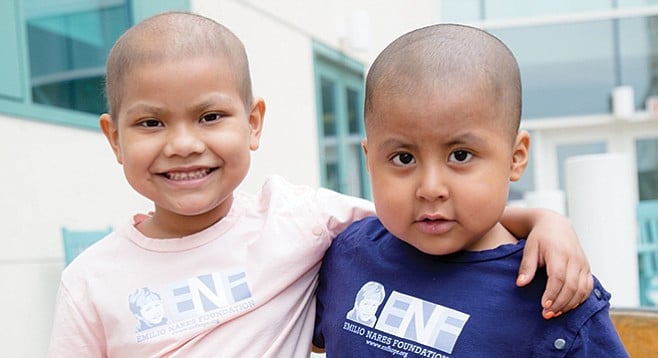
Emilio Nares was three years old the first time he went to Rady Children’s. He had just started preschool and had come down with something. At first, his parents, Richard and Diane, thought it was just a cold or the flu. Preschool exposes kids to all sorts of new germs, they thought. So they brought Emilio to his pediatrician and were sent home with the usual advice: take some children’s acetaminophen for the fever, get lots of rest, and drink a lot of fluids.
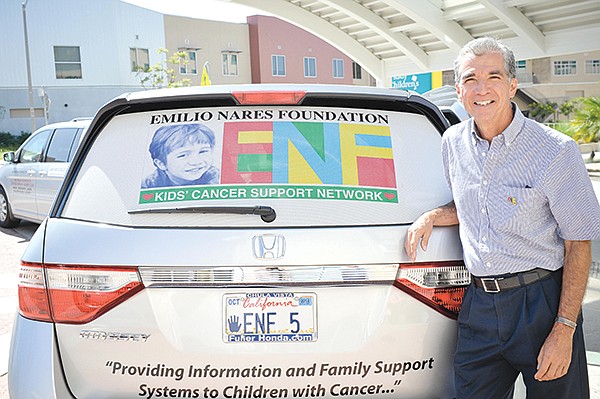
They did what the doctor ordered.
As soon as Emilio got better he was able to go back to preschool. Soon after he returned, he came down with another fever, only higher. They called the doctor who advised to keep him home from school and have him rest again. They gave him fluids and looked after him closely. When button-sized bruises showed up all over his little body, Richard and Diane rushed him to Rady Children’s Hospital.
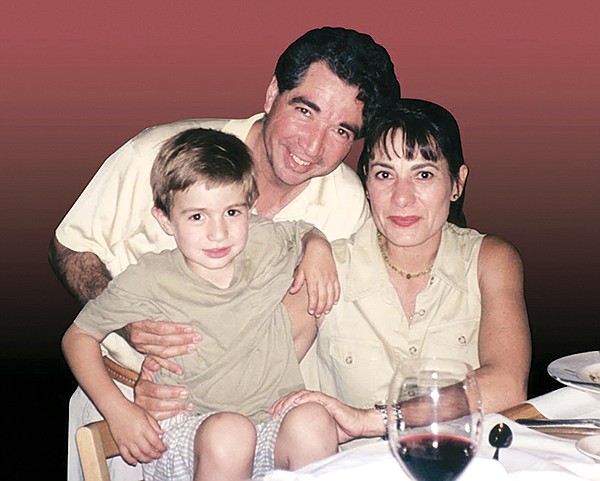
It was mid-day as they sat in the waiting room, holding Emilio and nodding compassionately to the other parents of sick little ones. No matter how cheerful the decor or what Disney show was on, there would be no distraction from their concern. With Emilio’s temperature at 104, they knew they wouldn’t have to wait long.

Emilio was Richard and Diane’s only child. They had him in their early 40s. They had met and married later in life, tried for a couple of years, and finally had a beautiful boy with big brown eyes and light-brown hair.
When Emilio’s name was called, Richard and Diane walked through the emergency-room doors. The nurses and staff lit up when they saw Emilio’s sweet smile. His assigned nurse took Emilio’s vitals and kept him preoccupied and happy. Keeping Emilio’s spirits up was easy; he was delighted by conversation, especially if it involved bugs or trucks.
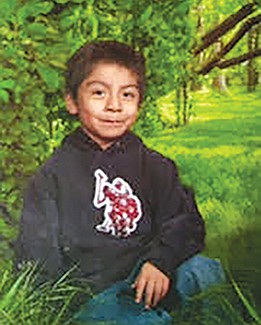
The nurse asked questions and looked over the bruises delicately. She answered Richard and Diane’s questions without giving away too much information before the doctor arrived. Emilio was given a private room. The doctor came in and asked more questions, then ordered extensive bloodwork.
The doctor and nurses knew the signs for childhood leukemia. Rady Children’s is the only hospital in San Diego County dedicated exclusively to pediatric healthcare and the region’s only designated pediatric trauma center. They had seen children with Emilio’s conditions before. They needed the bloodwork to confirm it.
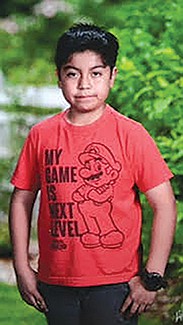
The doctor and nurse revealed to Richard and Diane that Emilio had childhood acute lymphoblastic leukemia, a cancer of the blood and bone marrow. They sat stunned. “I will never forget that fear,” Richard recalls as he looks into the distance.
Childhood acute lymphoblastic leukemia is a cancer in which the bone marrow makes too many immature lymphocytes (infection- and disease-fighting white blood cells). This type of cancer usually gets worse quickly if it isn’t treated quickly, so Emilio was admitted right away. They spent the afternoon confirming the diagnosis with more testing and a painful bone-marrow biopsy. They wanted Emilio to start chemotherapy right away, so a skilled oncology nurse placed an IV line and Emilio was administered chemo that night. “As a parent, you feel totally helpless. You can’t take the fear or the pain away,” Richard remembers.
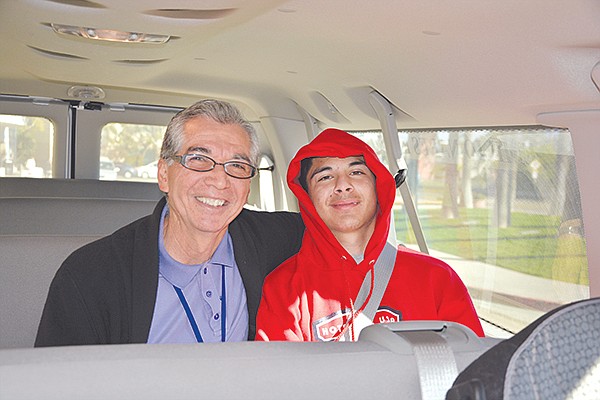
Emilio never went back to preschool. He fought leukemia for three years, but in the year 2000, he passed away after his sixth birthday.
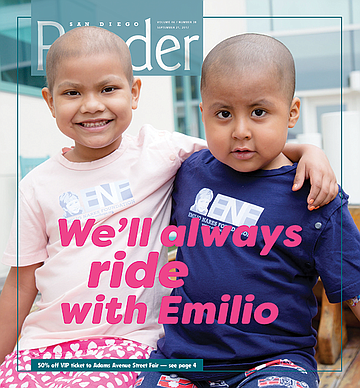
Like many families with a child who has cancer, the Nares family practically lived at the hospital. Once given a round of chemotherapy, Emilio had to be in a germ-free environment to protect his vulnerable immune system. And many childhood cancers are aggressive and must be treated with equally aggressive chemotherapy. Many children live at Rady Children’s as they receive their treatment.
When this happens, the spacious hospital rooms are decorated so that the children can feel a sense of home. A warm comforter helps disguise the large hospital bed. Framed family pictures dot the open space, pulling focus from the ominous IV stand. Books and games sit in bookshelves. And the couch, covered with blankets and big enough to hold slumbering parents, sits underneath the large window overlooking the artificial garden play area.
The children who don’t live at the hospital will come in for a day, receive their chemo transfusions, and then go home to recover. While spending so much time in the hospital with Emilio, Richard and Diane noticed many of the families were taking public transportation to the hospital. Public transportation with a child undergoing chemo is risky from a germ standpoint.
Once Emilio passed away, Richard volunteered to give the families that had become his friends rides back and forth to their appointments at the hospital so they wouldn’t have to take public transportation. A fine artist by trade, Richard was working in downtown San Diego as a picture framer, and Diane went back to work as an executive in the wine industry. Richard began driving families back and forth in his dad’s old Buick during his lunch hours or before work. “I still wanted to be a part of it,” Richard says. “It helped fill the wound.”
News of Richard’s rides echoed in the oncology halls. Soon, there were too many families to fit into his sedan. There wasn’t enough time in the day to carry a full-time job and get the multiple families back and forth. He didn’t have the resources. Small details, like needing a carseat for a sibling, would bring his day to a halt.
So, Richard quickly became a grant writer. “I had no idea what I was doing at first,” and he wrote to multiple foundations for help. He needed money for a van and a driver. He wrote about the families struggling with the very basics of caring for a sick child. He had records of the miles, the families, and the appointments and told the foundations about his quest that was quietly becoming his dream. By 2005, he raised a little over $130,000, bought his first van, and the Emilio Nares Foundation was formed.
“Not only is it an emotional crisis for entire families, but it is a financial crisis for lower-income families. I want to do more,” Richard mentions.
In 2016, with three vans, the Emilio Nares Foundation brought over 180 children in San Diego County and Imperial Valley to their appointments at Rady Children’s. Over 2200 appointments were met. Over 4000 trips were made, and the vans drove a combined 106,000 miles. Most importantly, each family had a clean vehicle they could rely on. As Richard looks out to the parking lot and sees one of his vans waiting for a patient, he says softly, “We’re here to make these families' lives better.”
Richard and Diane aren’t the only parents who wanted to give back. Many hospital employees started as parents simply volunteering as “parent liaisons.” These parent liaisons were such a key part of the collective care team that they were hired full-time.
After receiving a cancer diagnosis, families reach for answers that the doctors and nurses can’t give until they see how the child responds to treatment. That takes time. In the meantime, families search for reassurance, strength, guidance, and hope. Gloria Rucobo and Josefina Martin DelCampo (both bilingual), are two of the parent liaisons who work with the team and with the families, to help them get through treatment and be comfortable in their environment. “There’s so much beauty in being able to work here,” Rucobo says.
Rucobo’s son Raul was five years old when he was diagnosed with acute myeloid leukemia, an aggressive cancer not often found in children. According to Cancer.net, the average age at the time of an acute myeloid leukemia diagnosis is 67 years. For six years, as her son received a bone-marrow transplant and underwent chemotherapy, she lived the experience. Her son did everything he could but passed away when he was 11 years old. After taking some time to heal, Rucobo began working as a parent liaison. It’s been 21 years since he passed, and she still feels close to him there. “Even though I went through this painful situation, I do believe God is using me in a positive way.”
Josefina Martin Del Campo’s son Alejandro was diagnosed with a terminal, malignant brain tumor at 14 years old. Del Campo thought she would lose him, but, after over a year and a half of aggressive chemotherapy, her son was told he was “cancer free” in 2008. “My son is a living testimony,” she says as her face lights up with joy. “As a parent liaison, I have found my mission in life,” Del Campo says. It’s been 16 years since Alejandro’s diagnosis. With resilience and tremendous pride, he now volunteers at Rady’s reception desk on Thursdays.
In May of 2006, when Rucobo and Del Campo met newly diagnosed six-year-old Anthony Hernandez and his family from Carlsbad, they wanted to help. Anthony was in kindergarten and enjoying every second of it when he began to feel extremely tired and lethargic. “He just wanted to sleep,” his mom, Angeles, recalls. Like the Nares family, Angeles and Vincent Hernandez thought it was the flu or a bad cold. Then, Anthony’s symptoms escalated into a fever. “He began sweating a lot.”
It was on a Saturday morning when Anthony began to feel shortness of breath. Angeles and Vincent had the day off from their jobs and took Anthony to North County Health Services, where they were told to “Go directly to the ER.” Vincent and Angeles rushed him to Rady Children’s, not knowing what was happening or what was wrong.
At Children’s, they were given the diaganosis. “Cancer?” Angeles recalls. “I couldn’t believe it. A lot of things rushed through my mind. Is he going to survive? How long will he live? I kept asking, ‘Is my son going to die? Is he going to die?’” Angeles shakes her head as she remembers her innocence and confusion during that moment. Here she was, five months pregnant and about to give life to one child while her other lay dying.
No one could give Angeles the answers to her questions. No one knew. Each child responds differently to the chemo and other treatments. What they did know was they needed to give him a blood and platelet transfusion immediately. They also needed to do more tests to discover what exact cancer he had and what they were dealing with. “He’s in good hands,” Del Campo comforted them.
“Can I take him home?” Angeles asked the ER doctor.
“No, you need to stay,” the doctor responded urgently.
“For how long?” Angeles asked.
“We don’t know yet,” the doctor answered.
Anthony was admitted to the “childhood cancer floor ” — oncology — that night. There, he would see a new set of doctors and have many more tests. That night, around midnight, “There was a knock at the door. The doctors came in with the results of the tests. They told us Anthony had acute lymphoblastic lymphoma.”
Anthony would have to have chemo administered directly into his spinal fluid to begin treatment. Then, knowing Anthony’s treatment would be long and arduous, and needing to be able to administer more and many types of chemo without damaging his little veins, an operation was scheduled for his chemo port to be placed after his counts came up. Ports are used for treatment that can last weeks, months, and years. They reduce the number of needle sticks, can give more than one treatment at a time, and can be placed into stronger veins that can withstand the chemicals over time. As soon as it was placed in his chest, Anthony began chemo.
Anthony responded well. They were hopeful. “We didn’t know what was going to happen,” Angeles says. “I had to quit my job so I could be with him every minute.”
Anthony looks over at his mom with quiet adoration as he talks about his diagnosis, “I wasn’t really scared. I just got a little scared when my mom thought I might die,” he says softly.
“Anthony didn’t know what cancer was. He didn’t even know what the flu or a surgery was,” Angeles remembers. “But after I said, ‘Is my son going to die?’, Anthony started crying and saying, ‘I don’t want to die.’”
Anthony stayed in the hospital for two weeks. Then, chemo and labs were scheduled for every Monday and Thursday without an end date, until they knew how he’d respond. The Hernandez family tried to figure out how to do it on their own. They thought they could manage. They hunkered down and kept to themselves.
With one driver in the family, they’d wake at 4:30 a.m., leave for the hospital at 6:00 a.m. and wait for their appointment in the hospital lobby’s McDonald’s. Then, Anthony would have his treatment, recover for a few hours, then they would go back to the McDonald’s and wait three hours to be picked up when Vincent was done with work. The days were long.
Del Campo persisted when she saw them, “How are you getting back and forth to your appointments?” she asked. “There’s an Emilio Nares Foundation van that goes to North County twice a week,” Del Campo strongly urged. She talked to their case manager immediately. Angeles followed suit. All appointments needed to be coordinated for the Hernandez family to get rides. Within a few days, Angeles, Anthony, and his big brother were being picked up by one of the Emilio Nares Foundation’s vans on Mondays and Thursdays — for every appointment — and taken home to recover right after.
There was no more waiting.
“The rides saved my family,” Angeles says, “Armando, our van driver, was so kind. He was so nice and he had a big smile. He would tell me to just, ‘celebrate every day.’ To not look too far in the future. To live in the moment. It helped us so much.”
Angeles found support among her fellow van passengers. “In the vans, all of the moms come together and become friends because we are going through it together. You become so close, with the families and the kids. You ride with them to all of our appointments.” Angeles takes a deep breath to gather herself. “I have to look forward, for them.”
Three of the families with whom Angeles and Anthony shared rides lost their children. One family had a 19-year-old son, one had a 10-year-old son, and one had a daughter who was 15. “We would be driving with them for so long, and then we were in the van without them,” Angeles says.
Many trips, the Emilio Nares van would be full, and then, other times it wouldn’t. Armando had seen a lot in all the years he had been driving. “This is why Armando encouraged us to just live in the moment,” Angeles says truthfully.
Anthony is 11 now. He had his port taken out a year ago, four years after he began chemotherapy. “He’s been in remission for one year,” Angeles says, looking at him with pride, then giggling with her daughter, born three months after Anthony’s diagnosis. “We still have to come every two months for testing, and we still have to be careful and cautious with clean food and him getting sick. We still ride with Emilio. We’ll always ride with Emilio,” Angeles says, grateful to be able to talk about her experience.
Anthony is back to school. After missing a full year and many additional weeks and days, he’s had to work hard to catch up. But he did. After not being able to be outside much when he was sick, he loves to ride his bike now. “I like football, and I love Legos,” Anthony says with a shy smile. He brightens up as he reveals how he taught himself to build intricate Lego machines by watching YouTube videos.
Back on the oncology floor at Rady Children’s, Richard and Diane Nares recently installed a beautiful End of Treatment bell for children to ring when they finish their chemo. Its accompanying sign reads, “Ring this bell, Three times well, Its toll to clearly say, My treatment’s done, This course is run, And I am on my way!”
Richard and Diane are still running their course. They want to grow “Ride with Emilio” to every children’s hospital in the country.
Emilio Nares always wanted to ride in a van. “He loved them,” Richard says. “He was completely fascinated by them. Whenever he would see one, he would point them out,” Richard says, stopping to look at the sweet picture of his son on the side of the van, “We never got to take him in one.” As Richard walks back to the hospital, the van’s door slides to the left and a family of four jump out. A little girl with a scarf covering her head is on her way to chemo.


Emilio Nares was three years old the first time he went to Rady Children’s. He had just started preschool and had come down with something. At first, his parents, Richard and Diane, thought it was just a cold or the flu. Preschool exposes kids to all sorts of new germs, they thought. So they brought Emilio to his pediatrician and were sent home with the usual advice: take some children’s acetaminophen for the fever, get lots of rest, and drink a lot of fluids.

They did what the doctor ordered.
As soon as Emilio got better he was able to go back to preschool. Soon after he returned, he came down with another fever, only higher. They called the doctor who advised to keep him home from school and have him rest again. They gave him fluids and looked after him closely. When button-sized bruises showed up all over his little body, Richard and Diane rushed him to Rady Children’s Hospital.

It was mid-day as they sat in the waiting room, holding Emilio and nodding compassionately to the other parents of sick little ones. No matter how cheerful the decor or what Disney show was on, there would be no distraction from their concern. With Emilio’s temperature at 104, they knew they wouldn’t have to wait long.

Emilio was Richard and Diane’s only child. They had him in their early 40s. They had met and married later in life, tried for a couple of years, and finally had a beautiful boy with big brown eyes and light-brown hair.
When Emilio’s name was called, Richard and Diane walked through the emergency-room doors. The nurses and staff lit up when they saw Emilio’s sweet smile. His assigned nurse took Emilio’s vitals and kept him preoccupied and happy. Keeping Emilio’s spirits up was easy; he was delighted by conversation, especially if it involved bugs or trucks.

The nurse asked questions and looked over the bruises delicately. She answered Richard and Diane’s questions without giving away too much information before the doctor arrived. Emilio was given a private room. The doctor came in and asked more questions, then ordered extensive bloodwork.
The doctor and nurses knew the signs for childhood leukemia. Rady Children’s is the only hospital in San Diego County dedicated exclusively to pediatric healthcare and the region’s only designated pediatric trauma center. They had seen children with Emilio’s conditions before. They needed the bloodwork to confirm it.

The doctor and nurse revealed to Richard and Diane that Emilio had childhood acute lymphoblastic leukemia, a cancer of the blood and bone marrow. They sat stunned. “I will never forget that fear,” Richard recalls as he looks into the distance.
Childhood acute lymphoblastic leukemia is a cancer in which the bone marrow makes too many immature lymphocytes (infection- and disease-fighting white blood cells). This type of cancer usually gets worse quickly if it isn’t treated quickly, so Emilio was admitted right away. They spent the afternoon confirming the diagnosis with more testing and a painful bone-marrow biopsy. They wanted Emilio to start chemotherapy right away, so a skilled oncology nurse placed an IV line and Emilio was administered chemo that night. “As a parent, you feel totally helpless. You can’t take the fear or the pain away,” Richard remembers.

Emilio never went back to preschool. He fought leukemia for three years, but in the year 2000, he passed away after his sixth birthday.

Like many families with a child who has cancer, the Nares family practically lived at the hospital. Once given a round of chemotherapy, Emilio had to be in a germ-free environment to protect his vulnerable immune system. And many childhood cancers are aggressive and must be treated with equally aggressive chemotherapy. Many children live at Rady Children’s as they receive their treatment.
When this happens, the spacious hospital rooms are decorated so that the children can feel a sense of home. A warm comforter helps disguise the large hospital bed. Framed family pictures dot the open space, pulling focus from the ominous IV stand. Books and games sit in bookshelves. And the couch, covered with blankets and big enough to hold slumbering parents, sits underneath the large window overlooking the artificial garden play area.
The children who don’t live at the hospital will come in for a day, receive their chemo transfusions, and then go home to recover. While spending so much time in the hospital with Emilio, Richard and Diane noticed many of the families were taking public transportation to the hospital. Public transportation with a child undergoing chemo is risky from a germ standpoint.
Once Emilio passed away, Richard volunteered to give the families that had become his friends rides back and forth to their appointments at the hospital so they wouldn’t have to take public transportation. A fine artist by trade, Richard was working in downtown San Diego as a picture framer, and Diane went back to work as an executive in the wine industry. Richard began driving families back and forth in his dad’s old Buick during his lunch hours or before work. “I still wanted to be a part of it,” Richard says. “It helped fill the wound.”
News of Richard’s rides echoed in the oncology halls. Soon, there were too many families to fit into his sedan. There wasn’t enough time in the day to carry a full-time job and get the multiple families back and forth. He didn’t have the resources. Small details, like needing a carseat for a sibling, would bring his day to a halt.
So, Richard quickly became a grant writer. “I had no idea what I was doing at first,” and he wrote to multiple foundations for help. He needed money for a van and a driver. He wrote about the families struggling with the very basics of caring for a sick child. He had records of the miles, the families, and the appointments and told the foundations about his quest that was quietly becoming his dream. By 2005, he raised a little over $130,000, bought his first van, and the Emilio Nares Foundation was formed.
“Not only is it an emotional crisis for entire families, but it is a financial crisis for lower-income families. I want to do more,” Richard mentions.
In 2016, with three vans, the Emilio Nares Foundation brought over 180 children in San Diego County and Imperial Valley to their appointments at Rady Children’s. Over 2200 appointments were met. Over 4000 trips were made, and the vans drove a combined 106,000 miles. Most importantly, each family had a clean vehicle they could rely on. As Richard looks out to the parking lot and sees one of his vans waiting for a patient, he says softly, “We’re here to make these families' lives better.”
Richard and Diane aren’t the only parents who wanted to give back. Many hospital employees started as parents simply volunteering as “parent liaisons.” These parent liaisons were such a key part of the collective care team that they were hired full-time.
After receiving a cancer diagnosis, families reach for answers that the doctors and nurses can’t give until they see how the child responds to treatment. That takes time. In the meantime, families search for reassurance, strength, guidance, and hope. Gloria Rucobo and Josefina Martin DelCampo (both bilingual), are two of the parent liaisons who work with the team and with the families, to help them get through treatment and be comfortable in their environment. “There’s so much beauty in being able to work here,” Rucobo says.
Rucobo’s son Raul was five years old when he was diagnosed with acute myeloid leukemia, an aggressive cancer not often found in children. According to Cancer.net, the average age at the time of an acute myeloid leukemia diagnosis is 67 years. For six years, as her son received a bone-marrow transplant and underwent chemotherapy, she lived the experience. Her son did everything he could but passed away when he was 11 years old. After taking some time to heal, Rucobo began working as a parent liaison. It’s been 21 years since he passed, and she still feels close to him there. “Even though I went through this painful situation, I do believe God is using me in a positive way.”
Josefina Martin Del Campo’s son Alejandro was diagnosed with a terminal, malignant brain tumor at 14 years old. Del Campo thought she would lose him, but, after over a year and a half of aggressive chemotherapy, her son was told he was “cancer free” in 2008. “My son is a living testimony,” she says as her face lights up with joy. “As a parent liaison, I have found my mission in life,” Del Campo says. It’s been 16 years since Alejandro’s diagnosis. With resilience and tremendous pride, he now volunteers at Rady’s reception desk on Thursdays.
In May of 2006, when Rucobo and Del Campo met newly diagnosed six-year-old Anthony Hernandez and his family from Carlsbad, they wanted to help. Anthony was in kindergarten and enjoying every second of it when he began to feel extremely tired and lethargic. “He just wanted to sleep,” his mom, Angeles, recalls. Like the Nares family, Angeles and Vincent Hernandez thought it was the flu or a bad cold. Then, Anthony’s symptoms escalated into a fever. “He began sweating a lot.”
It was on a Saturday morning when Anthony began to feel shortness of breath. Angeles and Vincent had the day off from their jobs and took Anthony to North County Health Services, where they were told to “Go directly to the ER.” Vincent and Angeles rushed him to Rady Children’s, not knowing what was happening or what was wrong.
At Children’s, they were given the diaganosis. “Cancer?” Angeles recalls. “I couldn’t believe it. A lot of things rushed through my mind. Is he going to survive? How long will he live? I kept asking, ‘Is my son going to die? Is he going to die?’” Angeles shakes her head as she remembers her innocence and confusion during that moment. Here she was, five months pregnant and about to give life to one child while her other lay dying.
No one could give Angeles the answers to her questions. No one knew. Each child responds differently to the chemo and other treatments. What they did know was they needed to give him a blood and platelet transfusion immediately. They also needed to do more tests to discover what exact cancer he had and what they were dealing with. “He’s in good hands,” Del Campo comforted them.
“Can I take him home?” Angeles asked the ER doctor.
“No, you need to stay,” the doctor responded urgently.
“For how long?” Angeles asked.
“We don’t know yet,” the doctor answered.
Anthony was admitted to the “childhood cancer floor ” — oncology — that night. There, he would see a new set of doctors and have many more tests. That night, around midnight, “There was a knock at the door. The doctors came in with the results of the tests. They told us Anthony had acute lymphoblastic lymphoma.”
Anthony would have to have chemo administered directly into his spinal fluid to begin treatment. Then, knowing Anthony’s treatment would be long and arduous, and needing to be able to administer more and many types of chemo without damaging his little veins, an operation was scheduled for his chemo port to be placed after his counts came up. Ports are used for treatment that can last weeks, months, and years. They reduce the number of needle sticks, can give more than one treatment at a time, and can be placed into stronger veins that can withstand the chemicals over time. As soon as it was placed in his chest, Anthony began chemo.
Anthony responded well. They were hopeful. “We didn’t know what was going to happen,” Angeles says. “I had to quit my job so I could be with him every minute.”
Anthony looks over at his mom with quiet adoration as he talks about his diagnosis, “I wasn’t really scared. I just got a little scared when my mom thought I might die,” he says softly.
“Anthony didn’t know what cancer was. He didn’t even know what the flu or a surgery was,” Angeles remembers. “But after I said, ‘Is my son going to die?’, Anthony started crying and saying, ‘I don’t want to die.’”
Anthony stayed in the hospital for two weeks. Then, chemo and labs were scheduled for every Monday and Thursday without an end date, until they knew how he’d respond. The Hernandez family tried to figure out how to do it on their own. They thought they could manage. They hunkered down and kept to themselves.
With one driver in the family, they’d wake at 4:30 a.m., leave for the hospital at 6:00 a.m. and wait for their appointment in the hospital lobby’s McDonald’s. Then, Anthony would have his treatment, recover for a few hours, then they would go back to the McDonald’s and wait three hours to be picked up when Vincent was done with work. The days were long.
Del Campo persisted when she saw them, “How are you getting back and forth to your appointments?” she asked. “There’s an Emilio Nares Foundation van that goes to North County twice a week,” Del Campo strongly urged. She talked to their case manager immediately. Angeles followed suit. All appointments needed to be coordinated for the Hernandez family to get rides. Within a few days, Angeles, Anthony, and his big brother were being picked up by one of the Emilio Nares Foundation’s vans on Mondays and Thursdays — for every appointment — and taken home to recover right after.
There was no more waiting.
“The rides saved my family,” Angeles says, “Armando, our van driver, was so kind. He was so nice and he had a big smile. He would tell me to just, ‘celebrate every day.’ To not look too far in the future. To live in the moment. It helped us so much.”
Angeles found support among her fellow van passengers. “In the vans, all of the moms come together and become friends because we are going through it together. You become so close, with the families and the kids. You ride with them to all of our appointments.” Angeles takes a deep breath to gather herself. “I have to look forward, for them.”
Three of the families with whom Angeles and Anthony shared rides lost their children. One family had a 19-year-old son, one had a 10-year-old son, and one had a daughter who was 15. “We would be driving with them for so long, and then we were in the van without them,” Angeles says.
Many trips, the Emilio Nares van would be full, and then, other times it wouldn’t. Armando had seen a lot in all the years he had been driving. “This is why Armando encouraged us to just live in the moment,” Angeles says truthfully.
Anthony is 11 now. He had his port taken out a year ago, four years after he began chemotherapy. “He’s been in remission for one year,” Angeles says, looking at him with pride, then giggling with her daughter, born three months after Anthony’s diagnosis. “We still have to come every two months for testing, and we still have to be careful and cautious with clean food and him getting sick. We still ride with Emilio. We’ll always ride with Emilio,” Angeles says, grateful to be able to talk about her experience.
Anthony is back to school. After missing a full year and many additional weeks and days, he’s had to work hard to catch up. But he did. After not being able to be outside much when he was sick, he loves to ride his bike now. “I like football, and I love Legos,” Anthony says with a shy smile. He brightens up as he reveals how he taught himself to build intricate Lego machines by watching YouTube videos.
Back on the oncology floor at Rady Children’s, Richard and Diane Nares recently installed a beautiful End of Treatment bell for children to ring when they finish their chemo. Its accompanying sign reads, “Ring this bell, Three times well, Its toll to clearly say, My treatment’s done, This course is run, And I am on my way!”
Richard and Diane are still running their course. They want to grow “Ride with Emilio” to every children’s hospital in the country.
Emilio Nares always wanted to ride in a van. “He loved them,” Richard says. “He was completely fascinated by them. Whenever he would see one, he would point them out,” Richard says, stopping to look at the sweet picture of his son on the side of the van, “We never got to take him in one.” As Richard walks back to the hospital, the van’s door slides to the left and a family of four jump out. A little girl with a scarf covering her head is on her way to chemo.
Comments